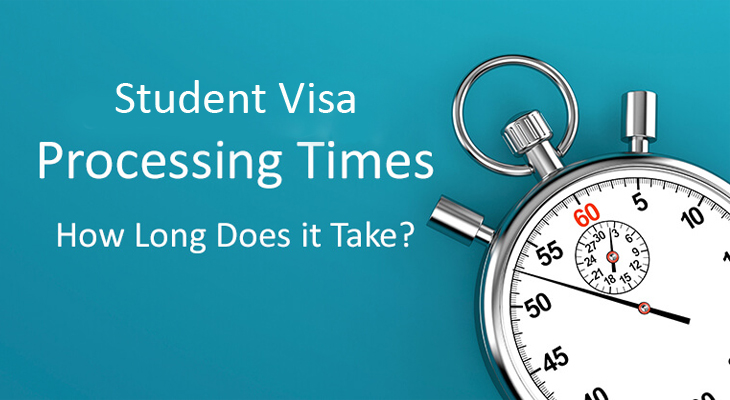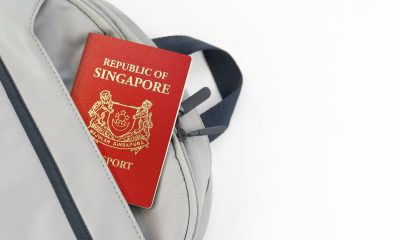Travel
US Student Visa: How Long Is F1 Visa Processing Time?

How long is F1 processing? The answer relies on several aspects, so let’s discuss how to get an F-1 visa and how long it takes.U.S. immigration law welcomes international students, which is excellent. F-1 visas are helpful and can lead to additional immigration options.
Let’s break down what you need to complete your F-1 processing before we estimate the time.
The F-1 visa allows international students to live, study, and work in the U.S. The other student visa is the M-1 for vocational and other nonacademic schools. The F-1 visa is for U.S. private elementary, high, college, or university students. It includes conservatories and seminaries.
USCIS requires the following to grant an F-1:
- That you have a permanent residence in your home country that stands as incentive to return there once your studies are complete.
- That you have a strong connection and reason to return to your home country afterward in the form of a job offer; assets such as a home, land, or a car; close family members, or a bank account.
- That you are able to support yourself during your stay in the U.S.
- That a qualifying educational institution is sponsoring you for your F-1 visa.
When you meet all four conditions, your school must enter your information with SEVIS (Student and Exchange Visitor Program). After this, the school must sign and mail you an I-20 Certificate of Eligibility for Nonimmigrant Student Status.
After receiving your I-20, complete the DS-160 nonimmigrant visa application online. After paying the cost, you can schedule an interview with the U.S. Consulate or Embassy in your native country. Bring your I-20, passport, portrait-style photo, DS-160 confirmation paper, and payment receipt.
Remember that only persons between 14 and 79 will be interviewed. The consular officer may interview U.S. visa applicants.
After passing your interview and presenting all relevant documents, you’ll likely be requested for biometrics (fingerprints) and your passport will be held and sent to you with your visa. Since visa clearance is not certain and the consulate can take weeks to return your passport and visa, it’s best to wait until your visa arrives before making travel preparations.
What is the F-1 Processing Time?
Your school determines F-1 processing time. Some colleges say I-20 processing takes weeks, while others say months. Ask your school about your petition.
For your student visa interview, you want to give yourself a significant amount of buffer time. Many F-1 applicants miss flights or school starts due to consular delays. The consulate may take two months to schedule an interview after receiving your DS-160 application. It’s better to give yourself a week or two to schedule that appointment.
F-1 processing takes five to six weeks from I-20 to consular interview. To learn more, contact your school, U.S. consulate, and immigration attorney.
How Long is the F-1 OPT Processing Time for an EAD?
Being permitted to work through Optional Practical Training during your F-1 schooling requires a few steps:
- Your DSO (designated school official) must recommend you for OPT by indicating it on your I-20 and in SEVIS.
- You must file an I-765 Application for Employment Authorization, also known as an EAD.
It may take about a week to ten days before the USCIS gets back with a notice that they received your I-785. If the application is approved, it could take between one and two months for you to receive an approval and to be summoned for a biometrics appointment.
Once you receive your EAD, you will be able to work under your OPT as you study through your F-1 visa.
How Long Does it Take to Have My F-1 Visa Reinstated?
Reinstatement may be possible if you lose F-1 status and want to study again. Your F-1 visa cannot be reinstated if you worked without authorisation. You must leave the country immediately or be considered “out of status”.
Re-enrolling in school and getting a new I-20 will reestablish your immigrant student status. File an I-539 form appropriately. An immigration attorney should help you complete this form due of its many uses.
Cover letters explaining F-1 status loss are required. This should explain why your demotion was unavoidable and why you should be reinstated.
After filing, F-1 reinstatement may take four months.
Can I Use Premium Processing?
Unfortunately, the premium processing service, which shortens processing time to just 15 calendar days for an additional fee, is only available for certain visas that utilize the I-129 and I-140 petitions. Because the F-1 uses the I-20, it is not eligible for premium processing.
Can I Adjust My Status for a Green Card?
If you enjoyed working and studying in the U.S., how can you extend your stay? You can apply for a green card or another temporary nonimmigrant visa. One issue, unfortunately. F-1 visas are single-purpose. You may have to do both.
Dual-intent nonimmigrant visas allow holders to apply for green cards. Dual-intent visas include H-1B, L-1, and O-1. Filing for a green card while an F-1 student could breach your visa.
The F-1 requires you to show that you’ll return home after school. Filing for a green card may cause future problems.
Change your status first to avoid issues and status violations. You can easily apply for a green card by switching from F-1 to H-1B status. However, the new visa requires qualification.
If you’re in STEM OPT, the H-1B visa may seem like the greatest option, but you’ll need a bachelor’s degree for a specialist position. Unless your new employment is a non-profit, government, or scholastic organization, your petition will be submitted into a lottery.
Another typical visa, the L-1, requires you to be an executive, manager, or specialized employee of a multinational corporation with a U.S. location. “Specialized employee” is not the same as “specialty employee” for H-1B purposes. Specialized employees don’t need a degree to get an L-1 visa because they know the company’s operations or product.
For an L-1, you must work for the employer overseas for at least one year in the three years before to filing the petition, so consider that into your processing time.
F-1 Visa to Green Card Processing Time
If you utilize one of these visas to modify your status before applying for an employment-based green card, you must find an employer to sponsor you and file an I-129 petition. Your employer must acquire a Labor Condition Application (LCA) for the H-1B.
H-1B and L-1 visa processing dates vary, but the I-129 usually takes six months. Premium processing reduces I-129 visa processing time to 15 days.
After receiving a dual purpose visa, your employer (current or new) can file an I-140 petition for you, which takes about six months to process. EB-1C and EB-2 with a National Interest Waiver cannot employ premium processing.
PERM
Depending on your green card type, filing an I-140 may require a PERM Labor Certification from your company. To ensure no suitable U.S. workers apply for your job, your firm must advertise and recruit.
PERMs typically take six to nine months. However, supervised recruitment or audits could add up to a year and a half to your PERM processing time.
Priority Dates
Note the date the USCIS receives your I-140. Compare your priority date to the Department of State’s monthly visa bulletin‘s final action dates. Final action dates vary by country and green card type.
Your priority date must equal or exceed your category’s final action date to proceed. Waiting for your priority date to be “current” can be the longest stage in the F-1 to green card process. Indian nationals seeking an EB-3 green card may wait almost a decade.
EB-1 applicants from Central America may not wait. Ask your immigration attorney about processing time since it varies.
The USCIS may delay processing your I-140 if your priority date is not current. If your priority date isn’t current for four years, your petition may not be handled until then. Except for premium processing. You must still wait four years.
Green Card Porting
Green card porting? First, an example. You graduate with a STEM bachelor’s degree under F-1 status, move to H-1B, and apply for an EB-3 green card as a professional worker. Your priority date may take years to update, depending on your nationality.
If you got a master’s degree and a new job that required it during that waiting time, your employer (current or new) could file a new EB-2 petition with the same priority date. This might cut F-1 to green card processing time by years!
This sensitive process requires you to find a new job that requires your EB-2 qualifications. Ask your immigration attorney if this is possible.
Adjusting Your Status
Since you are already in the U.S. as a nonimmigrant, you have two alternatives for converting from F-1 to green card status:
Adjustment of Status – U.S. residents only. To become an immigrant, submit an I-485 form to the USCIS. This form takes six months without premium processing.
Consular Processing: A consular officer will interview you in your native country. This may appear worse than status adjustment, but it may be cheaper and faster depending on your scenario.
After that, your passport will receive your green card. You will be a lawful permanent resident of the US after converting from an F-1 visa to a green card.






















